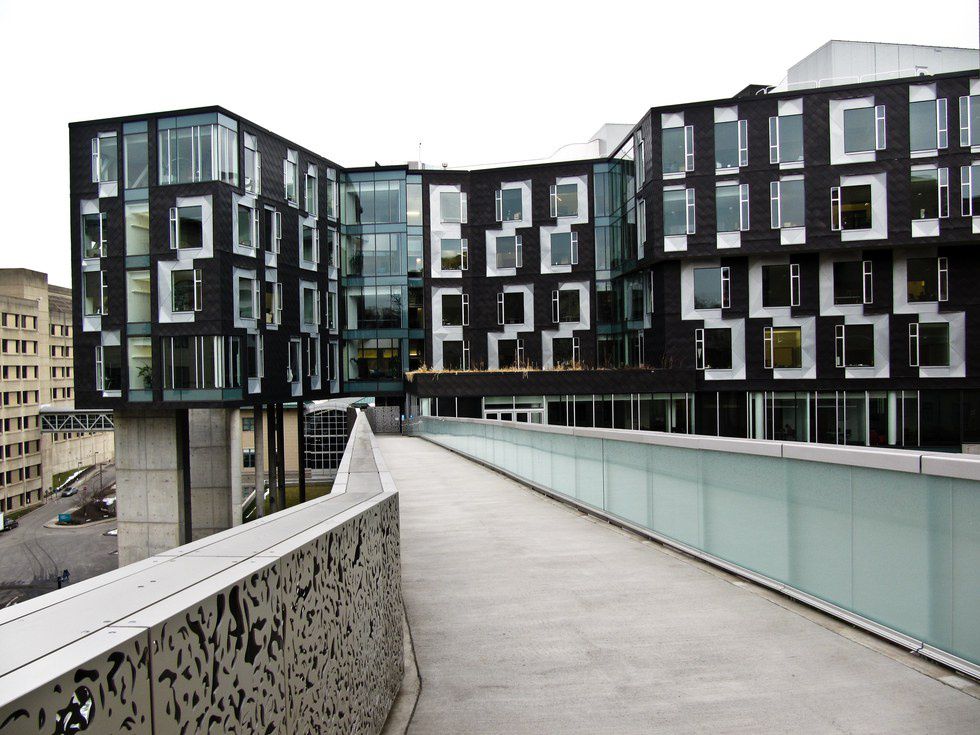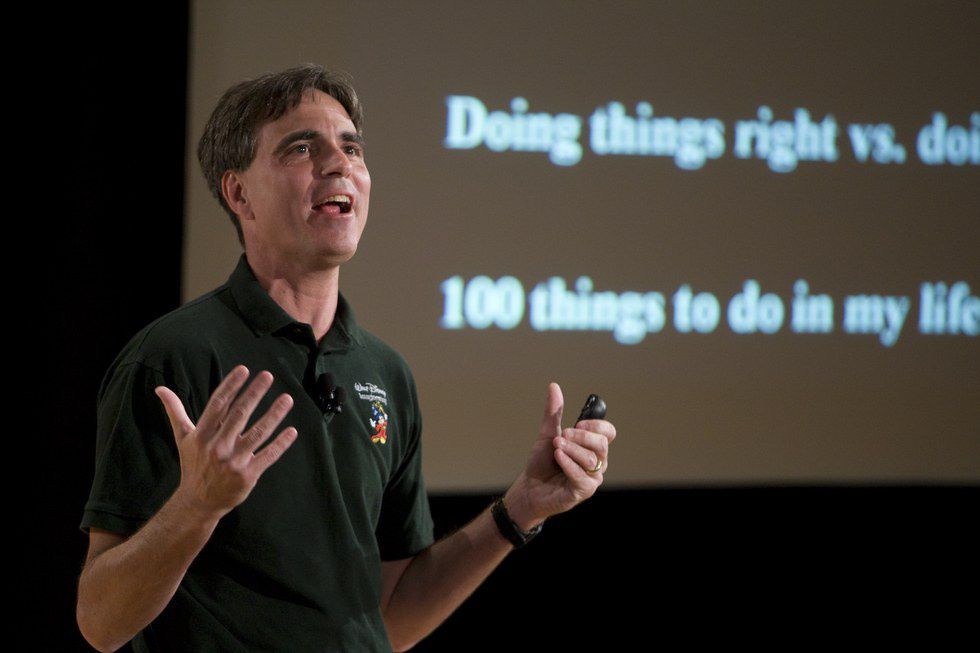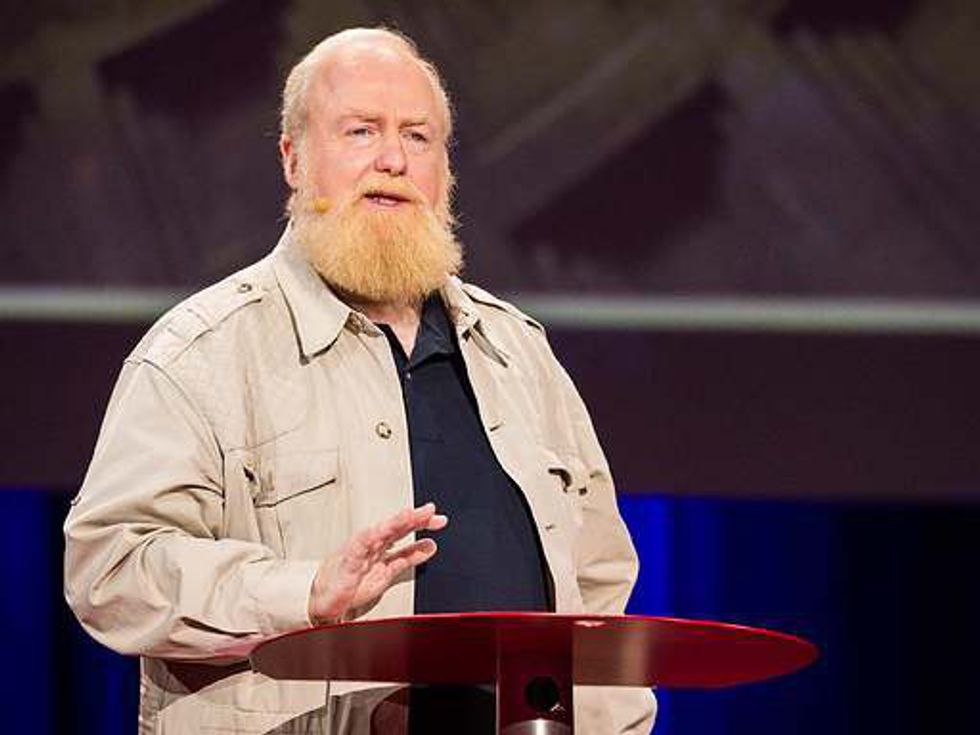August 5, 2016. 3:45 PM.
I’m fifteen minutes away from the end of my summer internship. My mind is wandering to thoughts of the weekend and article-writing, but I haven’t the slightest clue what I want to write about. I wander into one of my mentor’s office and tell him, “I don’t know what I want to write about. Help.” He asks me some questions and tells me to fire off answers without a second thought:
- “What are three things you find interesting?”
- Art, engineering, and more specifically, calligraphy.
- “What are three jobs you’d like to have?”
- An engineer, an artist, or a museum curator.
- “What are three things you’d like to learn more about?”
- Politics, physics, and art history.
I began to notice a pattern here. Art and science overlap in all of my answers, and he notices too. He begins to tell me about a guy named Randy Pausch, famous for his Last Lecture and his work as a Disney Imagineer. I listen to my mentor talk about Pausch and don’t think much of it, because I’m really looking for a spark to start an imagination fire in my head so I could crank out an article later tonight.
Now
Here we are. I have Googled and Binged and Wikipedia-d Randy Pausch. I’ve come to find that I really like the guy. Here’s a quick run-down on why he was an amazing person:
Randy Pausch worked as a associate professor for about nine years at University of Virginia where he took sabbaticals at Electronic Arts and Disney Imagineer studios. He then became an associate professor in Carnegie Mellon’s computer science division, and he created Alice 3D software in order to teach individuals about computer programming early in life. While at Carnegie Mellon, he co-founded their Entertainment Technology Center. He later developed pancreatic cancer, and was given a three-to-six months prognosis of good health left. He delivered a speech titled Achieving Your Childhood Dreams as part of Carnegie Mellon’s lecture series The Last Lecture only a month after his prognosis was given. Speakers in The Last Lecture series were prompted to give a lecture as if it were going to be their very last one. This lecture series was very popular, and gained national attention.
In Pausch's Last Lecture, he talked about how rare it was for Disney Imagineers to hire on an “academic”, as he was a faculty member at the University of Virginia when he applied to be an Imagineer during a sabbatical. He discussed the “brick walls” he had to break through to achieve many of his childhood dreams, but had great appreciation for them. He said, “Brick walls are to keep the other people out. Not you. They’re there to hold the people back who aren’t willing to work to overcome them.” While Pausch was overwhelmingly inspiring, what really interested me is that he had completed remarkable work in the fields of art and engineering. He was an Imagineer, for goodness’ sake. When I visited DisneyWorld as a kid, I loved meeting the Imagineers. They were so cool and they used their brains to make the world cool for others too!
Randy Pausch's Last Lecture can be found here.
After watching Pausch’s Last Lecture, I dug deeper into the overlap between engineering and art. I came across a TED Talk by a guy named Bran Ferren, a child of two artists who had become interested in the sciences by tinkering with outdated electronics as a kid. Ferren told his audience about the first time he visited the Pantheon in Rome and how it changed his life. He said that he couldn’t believe that the roof on the Pantheon was the original roof and that it had lasted over two thousand years.
Ferren said, “People were smart 2,000 years ago!” Next, in his talk, he wondered what the “modern Pantheons” (read: scientific and artistic miracles) could be and spoke of autonomous vehicles. What really stood out to me in Ferren’s lecture was toward the very end. He encourages individuals to pry visionaries with the potential to create modern “Pantheons” away from technology long enough for them to, “experience both the natural and design wonders of our world, our planet and our civilization.” Ferren says that we need to understand something that’s not always apparent: “that art and design are not luxuries, nor somehow incompatible with science and engineering.”
Ferren's TED talk is here.
That really stuck with me. I am pursuing a physics degree at a small, liberal arts college in Kentucky. While I love my college, when I respond to someone inquiring about my major, they often wonder “Why are you studying that here?” I wanted a small, inclusive school where I could form close relationships with my professors. I wanted to explore options other than physics, but I also want to be an engineer. My education is very valuable to me, and I appreciate that Ferren and Pausch linked the arts and the sciences successfully. I hope to do the same some day.
I love to draw and paint and play the piano, but I also love research and experiments and scientific discovery. The mutual appreciation of the arts and the sciences will go a long way, and hopefully make discovery more cohesive within creative and research disciplines.
If one only explores a single field and doesn't branch out into multiple disciplines, being technical or abstract, he or she is wasting potential discovery. Don't do that! Expand opportunities for success. Open multiple doors. Be willing to see the overlap in divided fields!
The same mentor that prompted me with the three aforementioned questions also said that he had heard that “STEAM” (science, technology, engineering, arts, and mathematics) is becoming the new “STEM” (science, technology, engineering, and mathematics). I looked into that a bit more as well, and he’s right. People are making great strides in incorporating art into technical disciplines, such as Pausch and Ferren. These men are just two individuals who lived within the interdisciplinary spectrum of this world, and who encouraged others to do the same. I hope to dedicate a large part of my life to this cause as well.
I did not include in-text citations for length’s sake, but all information quoted or paraphrased herein I found within the following sources:
CarnegieMellonU. "Randy Pausch Last Lecture: Achieving Your Childhood Dreams. "YouTube. YouTube, 20 Dec. 2007. Web. 06 Aug. 2016.
Ferren, Bran. "Transcript of "To Create for the Ages, Let's Combine Art and Engineering"" Bran Ferren: To Create for the Ages, Let's Combine Art and Engineering. TED.com, Mar. 2014. Web.
"The Last Lecture Summary - ENotes.com." Enotes.com. Ed. Scott Locklear. Enotes.com Publishing, n.d. Web. 06 Aug. 2016.
























